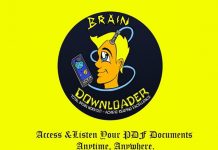In the world of Cloud Computing, organizations are striving hard to provide business and customer value faster than before by aligning their entire operating model. However, to accelerate the software development process enabling continuous delivery of customer value, organizations need DevOps, one of the most crucial aspects, and more recently, microservices – said, Gartner. Combining both technologies offers greater agility and operational efficiency for the enterprise. Microservices are an architectural development process that arranges applications as a collection of services. It is highly maintainable and testable, supporting testing efforts, agile development, and rapid service development.
- Loosely coupled with other services enable teams to work independently without affecting other services and rebuilding and redeploying the whole application.
- Independently deployable allows the small independent best mobile app developers‘ team to build, deploy, and scale their service without coordinating with other groups. It lowers all dependencies and complexities and enables businesses to develop software to increase.
Hence, microservices architecture encourages fast, frequent, and reliable application delivery instead of a monolithic architecture. Its architecture developed from a standard DevOps ideology, which came into existence at companies like Amazon, Netflix, Sound Cloud, Facebook, Google, and others. Moreover, it has reduced the development complexity by breaking it into more minor, simpler, and maintainable services. These unique characteristics of microservices bring highly scalable applications to market faster and enable your team to achieve DevOps goals more quickly than ever. In this blog, we know about the significance of combining microservices and DevOps to modernize your organization and its impact on the enterprise application.
Significance of combining microservices and DevOps
With microservices, cloud-native application architectures are complete. Hence, organizations leverage modern software development techniques, tools, and technologies, like DevOps and microservices architectures, to build applications faster. It enables development teams and operations staff to automate the software release process, from the design to test and deployment. Since both technologies are connected, they offer enterprises greater flexibility, agility, and operational efficiency. Using both technologies, the best mobile app developers can gain insights into production planning to build software at high speed with quality and better accuracy. Not only this, but DevOps can also facilitate easy collaboration amid development and eliminate resistance. It is also wasteful handoffs between development teams and operations staff.
On the other hand, Microservice is a Service-Oriented Architecture (SOA)- a software development technique. They are tiny pieces of functionality and independent building blocks that make it easier to build, test, and understand applications. In addition, microservices are easy to deploy in any cloud. And the best thing is that developers don’t need to write specific codes for Microsoft Azure and AWS platforms separately. Microservices and DevOps: Creating change together in application development
Faster yet easy deployment
Every microservice runs separately with its database. Hence, the developer’s team doesn’t need to wait for the entire application development process. It helps to increase the overall pace of application delivery. While DevOps enhances the development and IT operations culture, microservices help you build, release, and maintain applications faster and easier.
































